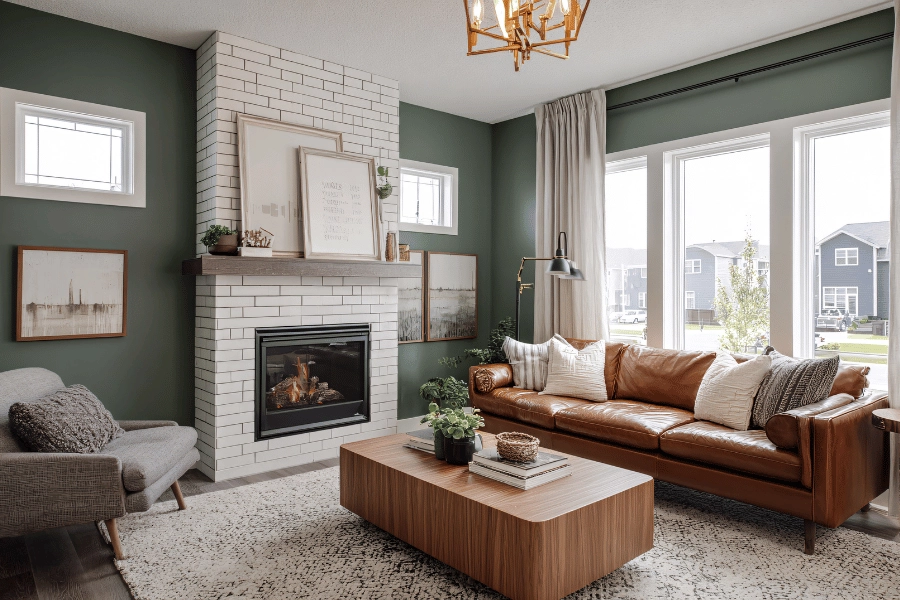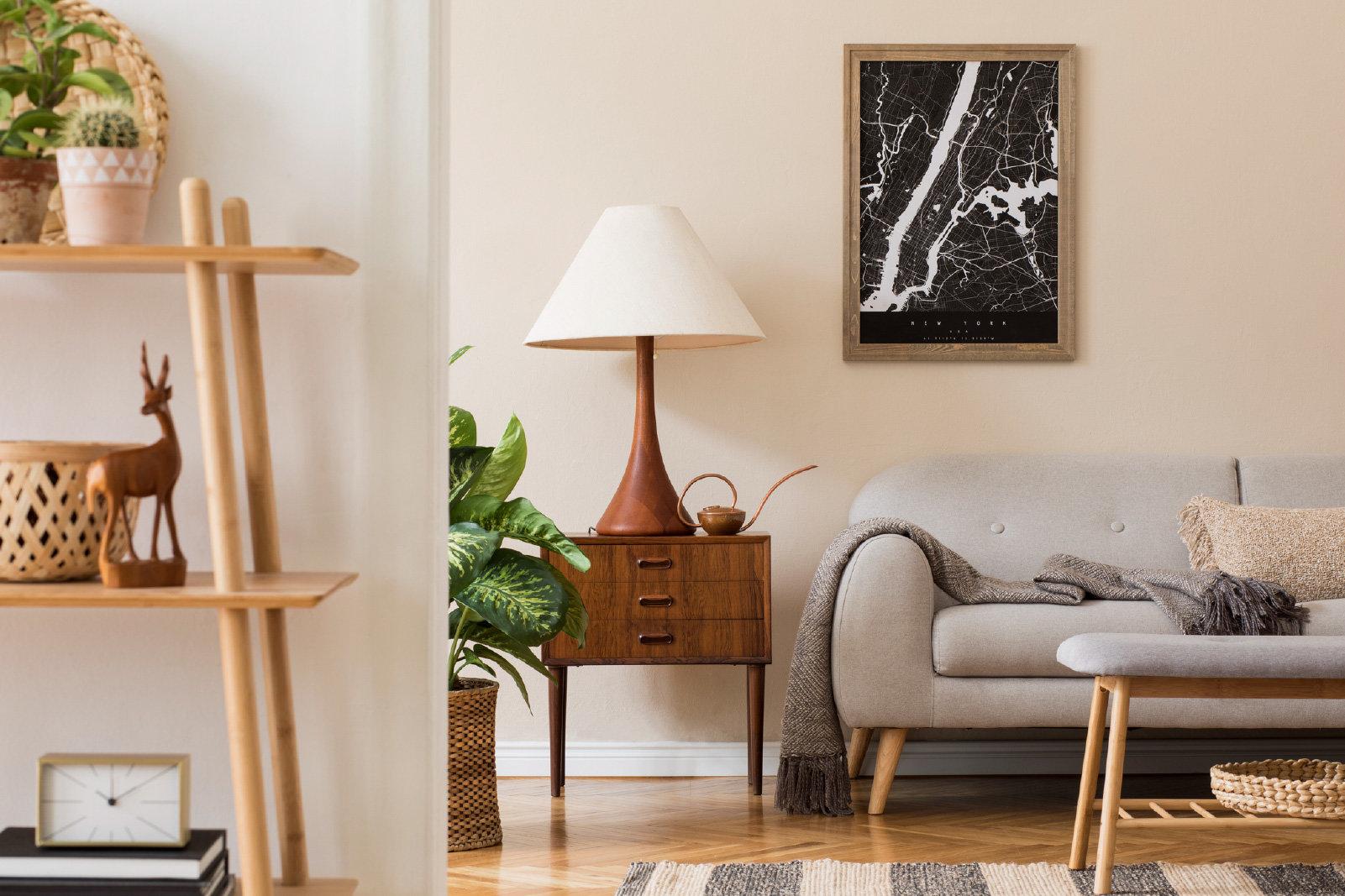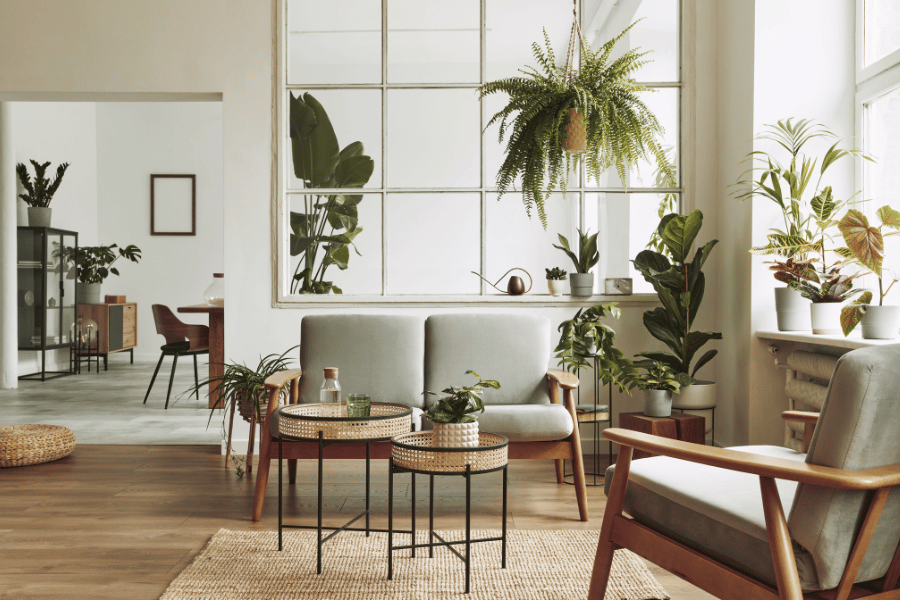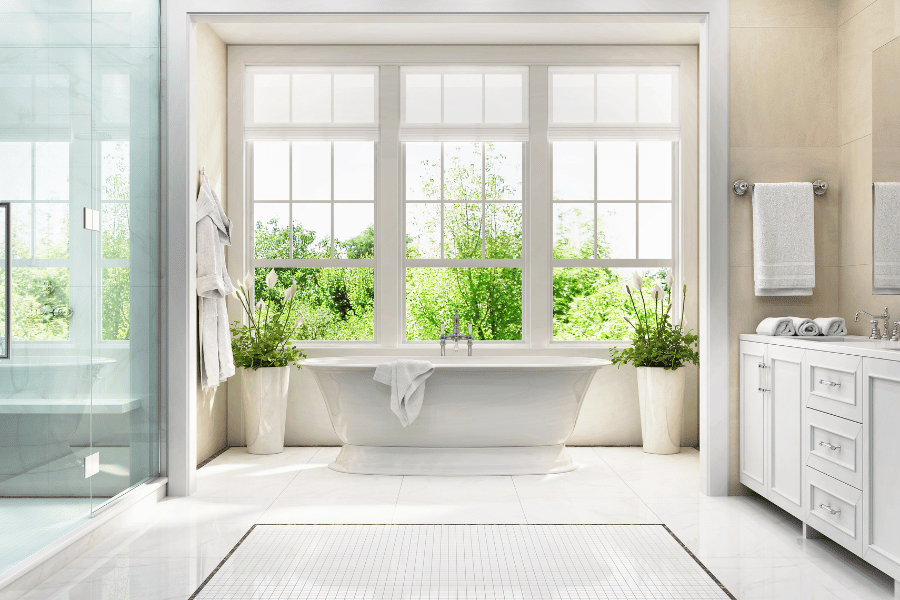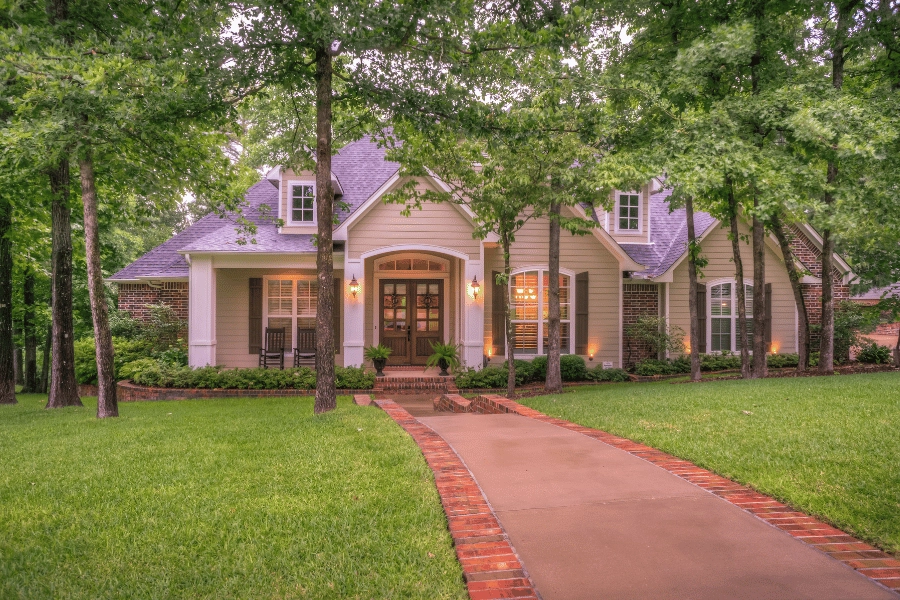House Staging Costs
What does house staging cost? Here is everything you need to know about staging as you prepare your home for the market!
Selling your home is one of the biggest financial decisions you'll make, and first impressions matter more than ever in today's competitive real estate market. Oftentimes, the difference between a home that lingers on the market and one that sparks a bidding war comes down to presentation.
If you are preparing to list your Raleigh property, you likely have heard about house staging and are wondering if it is worth the investment. Maybe you are concerned about the upfront costs, or are curious whether your beautifully maintained home even needs staging at all.
The truth is, home staging is about helping buyers fall in love with your home. It is about showcasing the lifestyle your property offers to potential buyers. Whether you are selling a single-family home or a townhome, understanding staging costs and benefits is essential to maximizing your return.
In this guide, we will break down everything you need to know about staging expenses and how strategic staging can lead to achieving a sale price that exceeds your expectations.
Let's dive into the world of house staging.
1. What is House Staging?
House staging is the process of preparing your home to appeal to the broadest range of potential buyers. It goes far beyond cleaning and decluttering a space.
Professional staging involves strategically arranging furniture, adding decorations, optimizing lighting, and creating inviting spaces that help buyers envision themselves living in the home.
The goal is simple: showcase your home's best features while minimizing any drawbacks. Staged homes photograph better for online listings, create emotional connections during showings, and often sell faster and for higher prices than their unstaged counterparts.
During the home staging process, the most significant focal points will be the living room, kitchen, dining room, main bedroom, bonus or office spaces, and bathrooms.
When hiring a professional home stager, they will typically charge an initial fee to evaluate your home and plan a list of things to do as you prepare your home for the market.
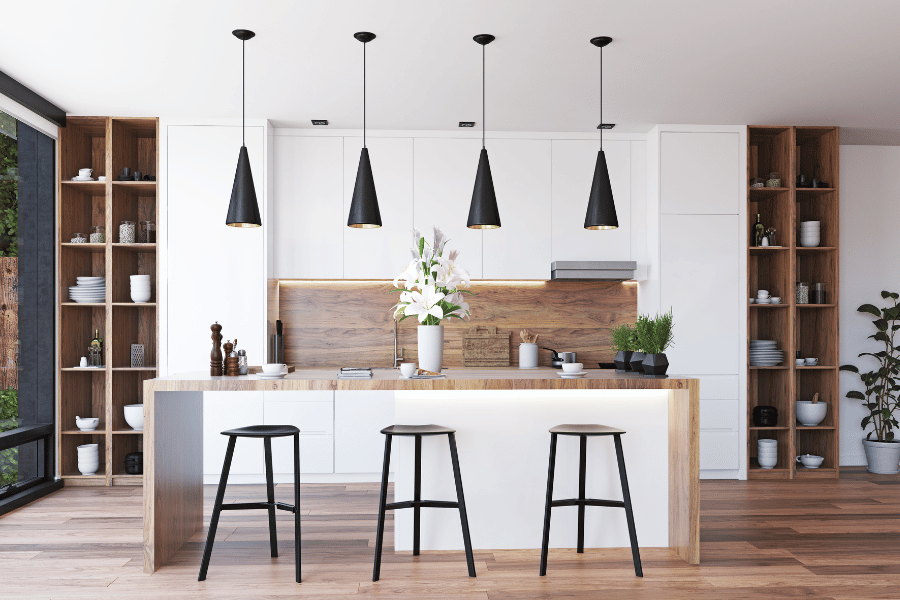
2. Why is House Staging Important?
According to the National Association of Realtors, staged homes typically sell 73% faster than non-staged homes. Even more impressive, properly staged properties can sell for 20% more than expected.
When buyers have multiple options, staging helps your property stand out in online searches and during in-person showings. Since 99% of millennial homebuyers start their search online, professional photos of a beautifully staged home are essential for generating interest and securing showings.
Beyond the financial benefits, staging helps buyers emotionally connect with your space. An empty house feels cold and impersonal, while an overly personalized home filled with family photos and quirky decorations can make it difficult for buyers to imagine their own lives unfolding there.
3. The Average Cost of House Staging
While you are still weighing your options for staging your home, rest assured that you have so many options. Looking to your trusted real estate agent to help guide you through this process would be best.
Many seasoned agents have been through this before and can go through your home and make recommendations. Other times, sellers choose to do it themselves, with successful results.
The bottom line is time and money. If you want to save time, spending a little more money will save you time and stress by hiring the pros to come in and handle it for you.
The cost of staging varies significantly based on several factors, but here's what homeowners can typically expect:
Initial Consultation: $300-$600 is the average for a consultation. Most stagers offer an initial walk-through consultation where they assess your home and provide recommendations. Some may credit this fee toward full staging services if you hire them.
Vacant Home Staging: $2,000-$5,000+ for initial setup. For empty properties, expect to pay between $2,000 and $5,000 for the initial furniture rental and staging setup. Monthly rental fees typically range from $500 to $1,200 if your home stays on the market longer than 30 days.
Occupied Home Staging: $1,000-$3,000 if the home is occupied. If you're still living in the home, stagers can work with your existing furniture, which significantly reduces costs. They'll rearrange what you have, recommend items to store, and might bring in a few accent pieces.
Per-Room Staging: $200-$800 per room. Some companies offer per-room pricing, which can be budget-friendly if you only need to stage key areas like the living room, master bedroom, and kitchen.
Luxury Home Staging: This can cost $5,000-$15,000 and upwards. High-end properties require premium furniture, artwork, and accessories to match the home's caliber, which increases costs accordingly.
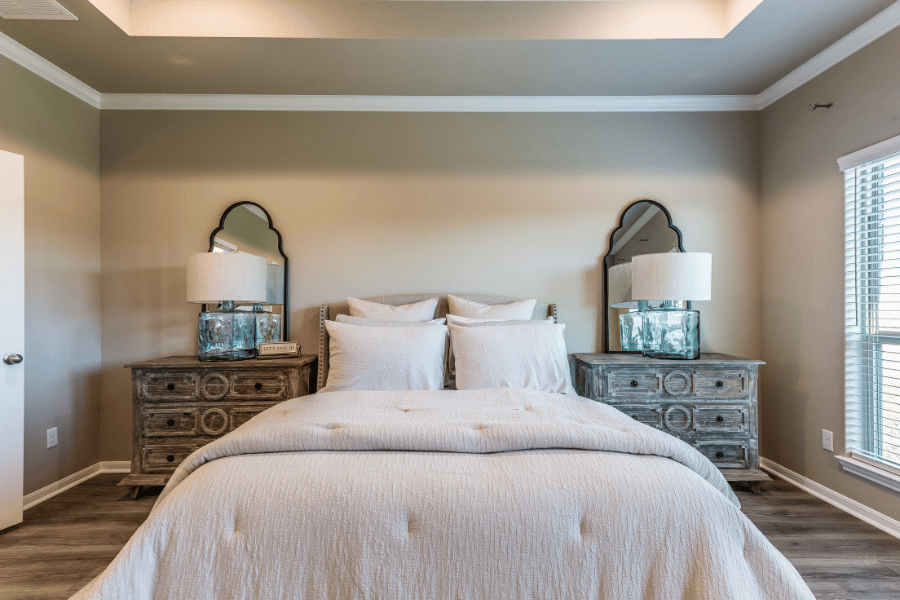
4. DIY Staging vs. Professional Staging Costs
Budget-conscious sellers might wonder if they can stage themselves. While DIY staging is certainly an option, it's important to understand the trade-offs.
If you have great taste and organizational skills, this could be a straightforward task for you to accomplish. Simple changes may be all your house needs to prepare for the market, and are often the most cost-effective for home staging.
Tasks like repainting your walls with a fresh and neutral coat of paint, rearranging your furniture, and adding new throw pillows and fresh towels to your bathroom may be all you need to sell your house.
Get rid of any obstacles that interfere with the home's natural flow. Walk through your home with a fresh set of eyes, or even invite your friends over to help you determine any awkward design choices you may need help recognizing.
The average cost for DIY staging is about $200-$800. You will spend money on paint, minor decorative updates, and perhaps renting a few key furniture pieces. However, without professional expertise, you might miss opportunities to maximize your home's appeal.
Professional staging, on the other hand, costs more upfront, but the return is substantial. If staging helps your home sell even one week faster, you can save money on mortgage payments, utilities, and carrying costs. For most homeowners, professional staging is worth the investment.
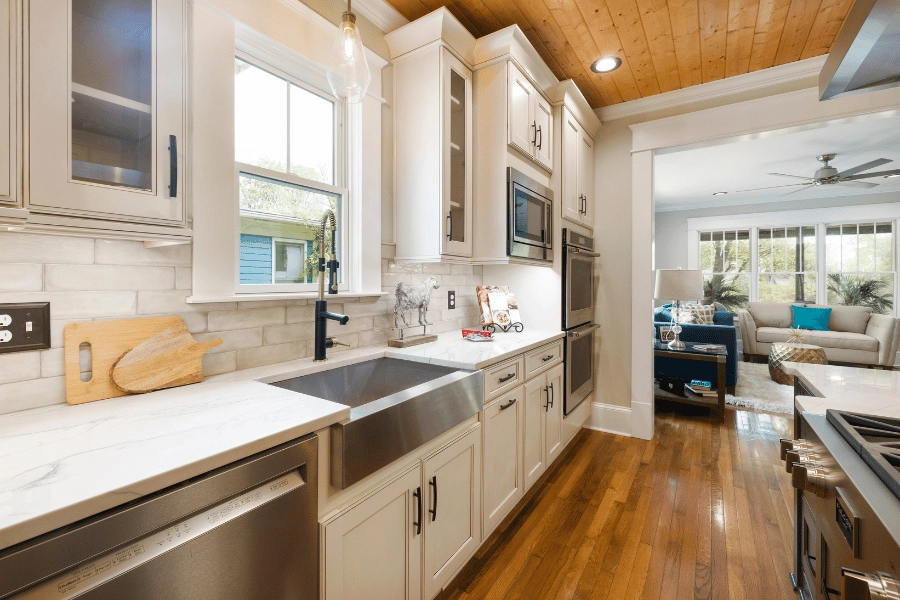
5. Hidden Costs to Consider
When budgeting for staging, factor in these potential additional expenses:
- Extended rental fees if your home doesn't sell within the initial staging period
- Storage costs for your personal belongings during staging
- Professional photography (essential for showcasing your staged home online)
- Touch-up cleaning between showings to maintain the staged appearance
- Utility costs for keeping the home at comfortable temperatures during showings
6. Essential Home Staging Tips to Maximize Your Investment
Whether you are working with a professional stager or tackling some preparation yourself, these proven staging strategies will help you get the most value from your investment:
Neutralize Your Color Palette
Bold accent walls and vibrant colors might reflect your personality, but they can turn away potential buyers. Stick to neutral tones like soft grays, warm beiges, and crisp whites.
These colors make spaces feel larger, brighter, and allow buyers to envision their own style. If you have bright purple or lime green walls, a fresh coat of neutral paint is one of the best investments you can make
Light is Important
Bright, well-lit homes feel more inviting and spacious. Open all curtains and blinds during showings to maximize natural light. Replace any burned-out bulbs and consider upgrading to higher-wattage LED bulbs in darker rooms.
Add floor or table lamps to dim corners. Lighting can make or break a space, and it's one of the most cost-effective improvements you can make.
Remove Personal Items
Remove family photos, personalized artwork, religious items, and collections that reflect your specific tastes. Buyers need to imagine themselves living in the space, which is difficult when your personal history is on display.
Create Clear Traffic Flow
Remove excess furniture that makes rooms feel cramped or creates awkward traffic patterns. Each room should have an obvious purpose and easy movement throughout.
If buyers have to navigate around furniture or turn sideways to walk through spaces, you have too much.
Style Surfaces
Kitchen and bathroom counters should be nearly bare, so make sure to remove small appliances, toiletries, and clutter. Incorporating fresh flowers, a bowl of lemons, or a stack of coffee table books can add life throughout the home without personalizing.
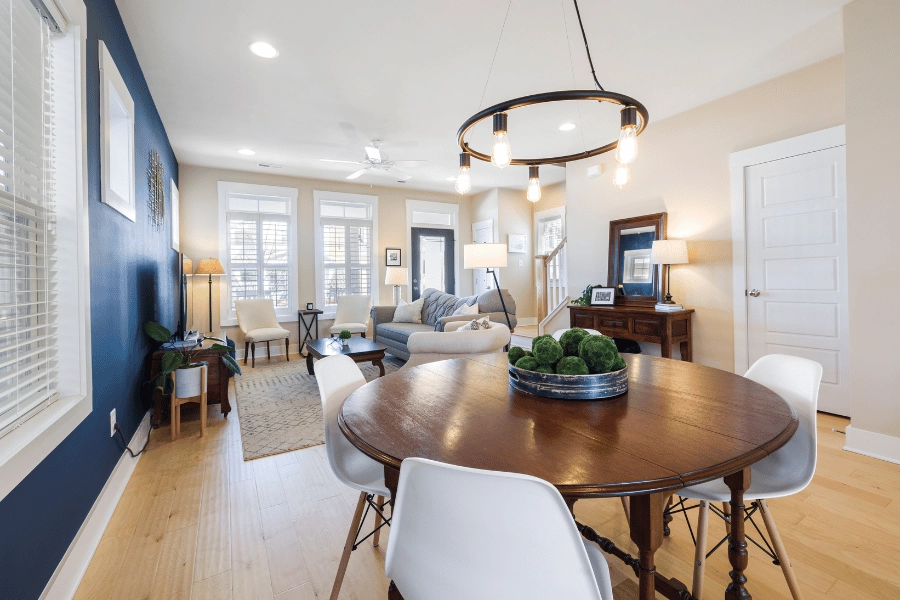
Boost Curb Appeal
Buyers form opinions before they even enter your home, which is why curb appeal is essential. Ensure your lawn is mowed, edges are trimmed, and landscaping is neat.
Add fresh mulch to beds ($150-$300), plant colorful flowers in pots near the entrance ($50-$100), power wash the exterior and walkways ($200-$400), and make sure your front door is clean and inviting.
Highlight Key Features
Draw attention to your home's best assets. If you have beautiful hardwood floors, showcase them by removing or minimizing area rugs. If you have great built-in shelving, style it attractively with books and minimal decorations.
Architectural details like crown molding, fireplaces, or bay windows should be emphasized, not hidden by furniture or clutter.
Garage and Storage Areas
Buyers will open closets, peek in the garage, and check storage spaces. These areas should be organized and no more than 50% full to demonstrate ample storage capacity.
Install shelving units if needed, use clear bins to organize items, and remove anything you do not absolutely need. A cluttered garage signals a lack of storage space, even in a large home.
7. Home Staging Statistics
Here are some interesting statistics about home staging according to the National Association of Realtors:
- 51% of buyer agents cited that home staging affected a buyer's view of the home.
- 81% of buyer agents said staging a home made it easier for a buyer to visualize themselves living in the home.
- The most common rooms that were staged include the living room, kitchen, primary bedroom, and dining room.
- $600 is the median amount spent when using a staging service.
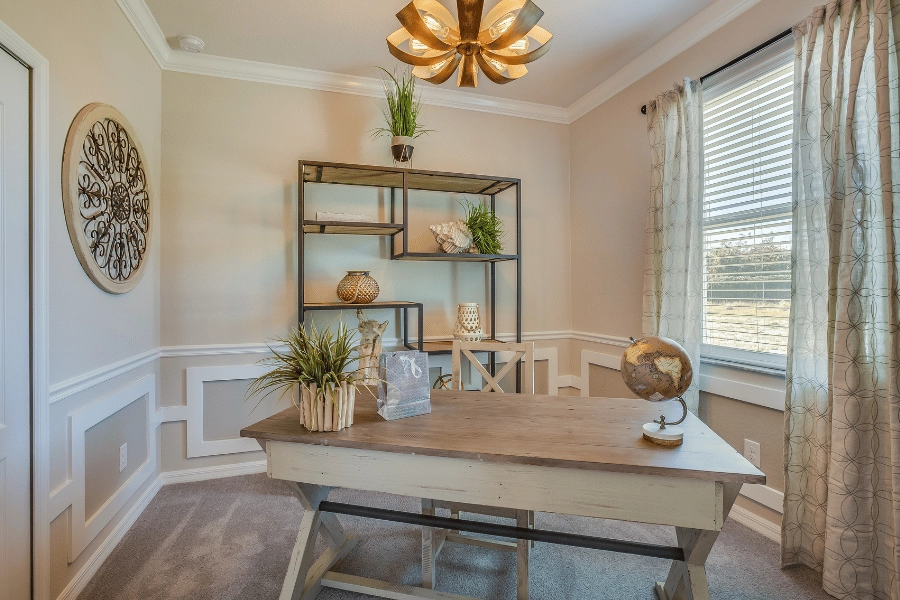
Methodology
Data was sourced from the National Association of Realtors to determine the cost to stage a home.
FAQs
What is the three-foot-five-foot rule for staging?
The three-foot by five-foot rule is a home staging technique that ensures that a space looks good at a three-foot view up close and a five-foot view further away.
Do realtors or sellers pay for staging?
Typically, sellers are the ones who pay for home staging costs. However, in some cases, a seller may sometimes split the cost with a real estate agent, depending on the situation.
Does staging increase home value?
Yes, home staging can increase home value and make it more attractive to buyers. Not only do staged homes tend to sell faster, but it typically results in a positive return on investment.
Final Thoughts on Home Staging
As you consider whether to invest in house staging, remember that you are not just spending money; you are making a strategic investment. A well-staged home typically generates more showing requests, receives stronger offers, and often sparks competitive bidding situations that drive the price up.
If you are still on the fence, consider starting with a staging consultation. For a few hundred dollars, a professional can walk through your home and provide specific recommendations.
You might discover that your home needs only minor adjustments, or you might learn that full staging would be a game-changer for your particular property. Either way, you will have expert insights to guide your decision.
Are you moving to Raleigh and ready to learn more about how staging could benefit your home sale? Contact Raleigh Realty today for a personalized consultation and market analysis.
